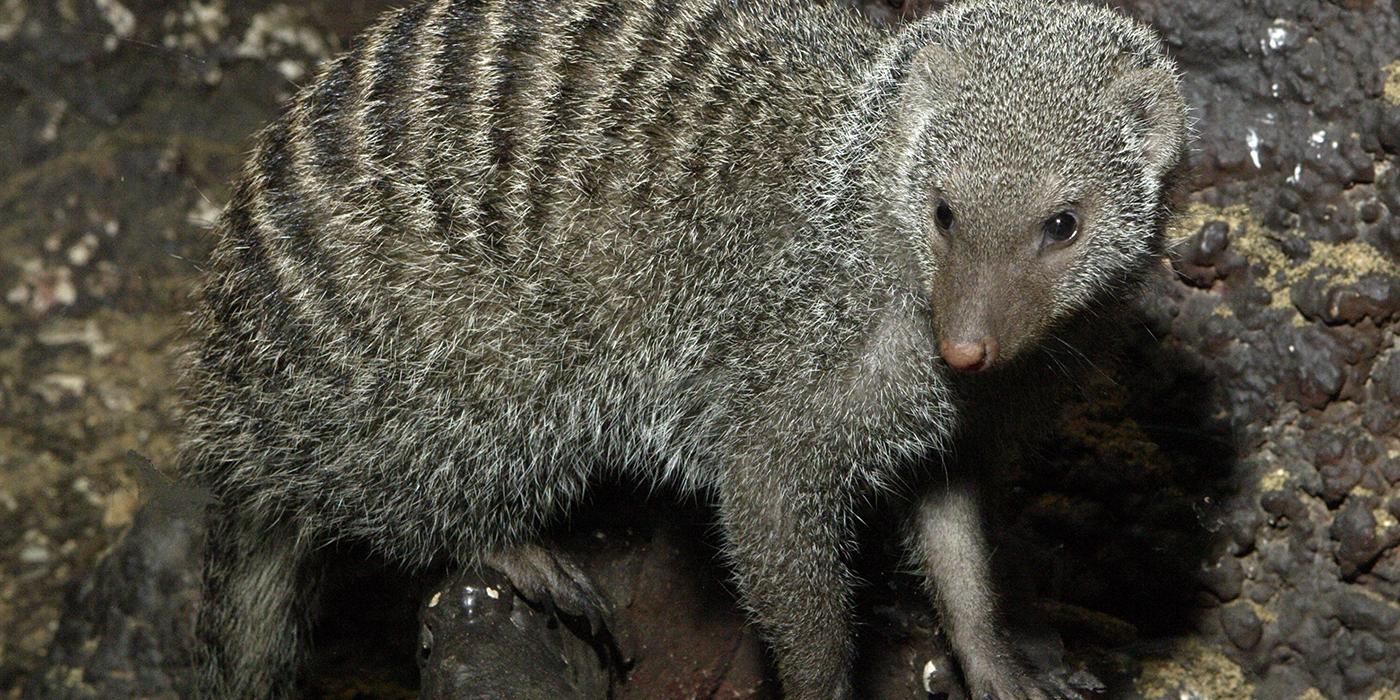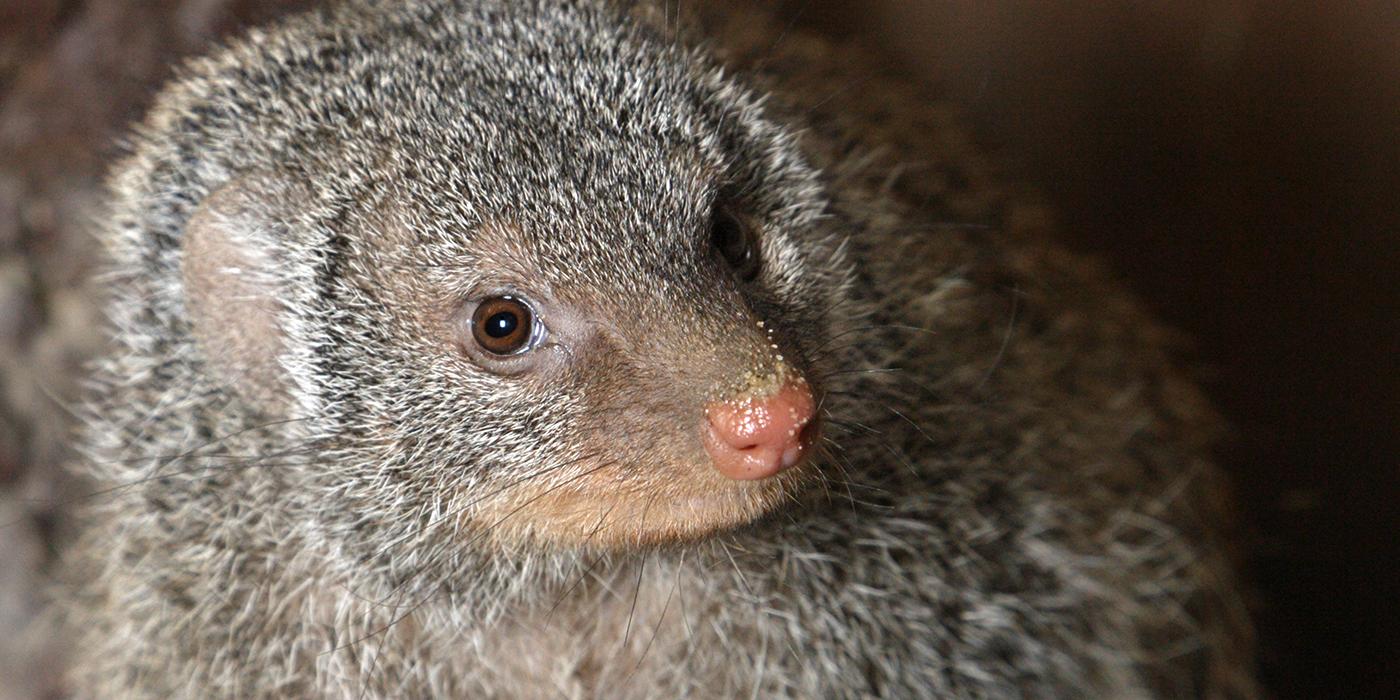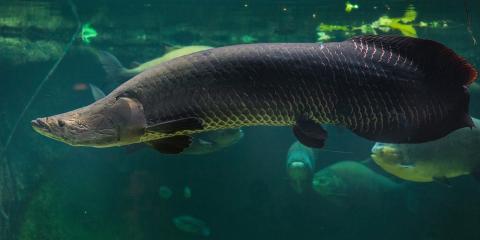Physical Description
Banded mongooses have a coarse, brownish-gray coat, dark feet, a black-tipped tail and dark bands across their back. These bands are found between the mid-back and base of the tail and are a distinguishing feature of this mongoose species. Their front feet have five digits, with long, curved claws, used for scratching and digging. Their hind feet have four digits and also have claws, although these claws are shorter, heavier and not as curved as the front claws.
Size
They are about 12-18 inches (30-45 centimeters) long with a 6-12 inch (15-30 centimeter) long tail. They weigh 3-5.5 pounds (1.5-2.5 kilograms).
Native Habitat
Banded mongooses are found in Africa, south of the Sahara, except for the Congo and southwestern Africa. They live in open habitat in grasslands, brush lands, woodlands and rocky country. They have a large range and may travel more than 5 miles a day to forage.
They generally stay in one particular den for a few days at a time, a week at most, and will frequently return to favorite sites. While they are able to dig their own burrows, these mongooses will usually use a natural crevice or an existing hole created by another animal.
Lifespan
They live around 10 years in the wild and up to 17 years in human care. In the wild, less than 50 percent survive to three months of age.
Communication
They have developed a vocabulary of calls to communicate with each other, as well as anal and cheek glands to scent-mark their territory. They may also scent-mark each other after group separation or a mild scare.
Food/Eating Habits
Banded mongooses are primarily insectivorous but eat a variety of foods, including beetles, crabs, earthworms, fallen fruit, grasshoppers, birds, eggs, rodents, scorpions, slugs, snails, snakes and termites. To break open hard food objects, such as eggs or snails, they throw the object vertically or backward, between the hind legs and into a stone or other hard object.
They are very possessive of food, and when they find food they eat it right away; there is no food sharing.
Sleep Habits
Banded mongooses sleep at night and are active during the day.
Social Structure
Unlike many mongoose species, banded mongooses are social and live in packs that average around 10 to 20 individuals, but can have as many as 40 individuals. There is one dominant male in the pack.
Reproduction and Development
Courtship involves the male chasing the female and circling her with his tail held high, covering her with anal gland secretions. The female also actively participates in courtship, often lying on her back and wrestling with the male. Females may mate with several males within a group.
Gestation lasts two months, and two to six young are born in a litter. Young are born blind and with little hair; their eyes begin to open around day 10. They begin leaving the den for short periods at about 4 weeks old and start to regularly accompany adults on foraging expeditions at 5 weeks old. The female reaches sexual maturity at around 9-10 months old.
Reproduction may be synchronized within a pack so that females give birth within a few days of each other. All pack members help carry the babies, and any lactating female may suckle the young. When the pack leaves the den to forage, a few females (about one for every eight young) will stay behind to care for the young. One or more males may also stay to help protect them.
Conservation Efforts
There are no major threats to the banded mongoose. This species is widespread in its habitat.
Help this Species
- Share the story of this animal with others. Simply raising awareness about this species can contribute to its overall protection.
- Are you a student? Did you love what you learned about this animal? Make it the topic of your next school project, or start a conservation club at your school. You'll learn even more and share the importance of saving species with classmates and teachers, too.




